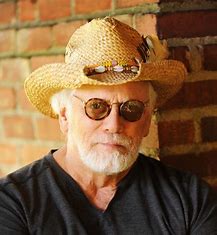The Birth of the US Army Camel Corps
The US Army Camel Corps was established in 1856 as an experiment to determine if camels could be used as pack animals in the southwestern United States. The experiment was initiated by then-Secretary of War Jefferson Davis, who believed that camels were better suited for the harsh desert terrain than horses or mules.
Over the next few years, the US Army imported more than 70 camels from the Middle East and North Africa. The camels proved to be highly adaptable to the desert environment and were able to carry heavy loads over long distances without needing much water.
Hi Jolly: The Iconic Camel Driver

One of the most famous figures associated with the US Army Camel Corps is Hi Jolly, also known as Hadji Ali. Hi Jolly was a Syrian-born camel driver who was hired by the US Army in 1857 to help train soldiers and camels for the Corps.
Hi Jolly quickly became a beloved figure among the soldiers, who admired his skill with the camels and his friendly personality. He also became a popular attraction for civilians, who were fascinated by the exotic camels and the sight of a Middle Eastern man wearing a turban.
Hi Jolly’s Later Years
After the US Army disbanded the Camel Corps in 1866, Hi Jolly was left without a job. He eventually settled in Quartzsite, Arizona, where he worked as a miner and prospector. He also continued to work with camels, using them to transport goods and people across the desert.
Hi Jolly died in 1902 and was buried in Quartzsite. In 1935, the Arizona State Highway Department placed a monument at his gravesite in his honor.
Hi Jolly’s Legacy
Today, Hi Jolly is remembered as a symbol of the US Army Camel Corps and the role that camels played in the history of the American West. His legacy has been celebrated in a variety of ways, including the annual Hi Jolly Daze Parade in Quartzsite and the Hi Jolly Monument in the Arizona desert.
There are also several popular cultural references to Hi Jolly, including the stage name of performer Stevie Starr, “The Human Regurgitator,” who uses Hi Jolly as a stage name, and the name of a San Francisco restaurant, Hadji Ali’s, which is located in the Laurel Heights neighborhood.
Conclusion
The US Army Camel Corps and Hi Jolly’s role in it are a fascinating and often overlooked chapter in American history. The Corps was an ambitious experiment that ultimately proved successful, and Hi Jolly’s legacy as a skilled camel driver and beloved figure is a testament to the enduring fascination with the American West and its unique history.



